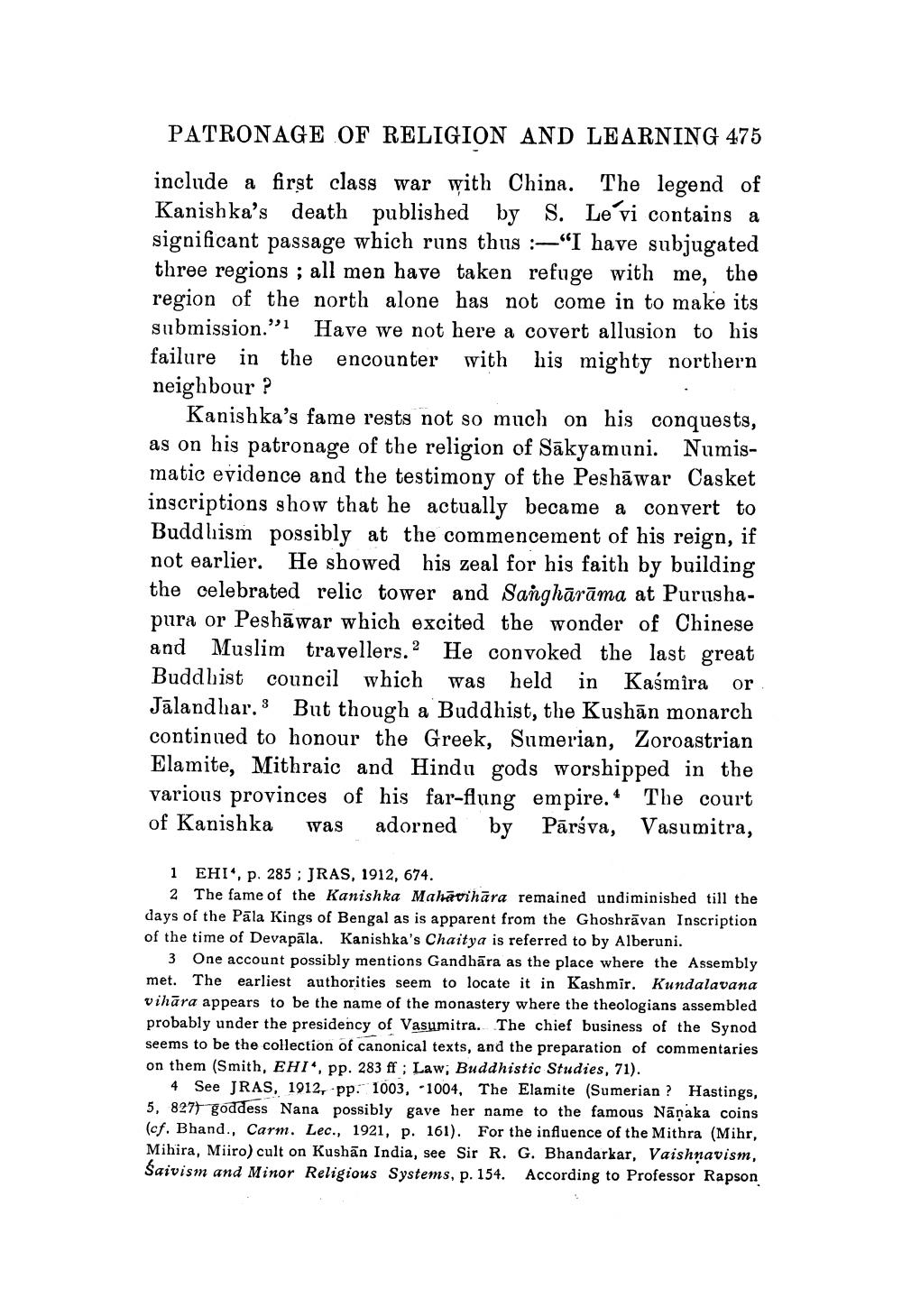________________
PATRONAGE OF RELIGION AND LEARNING 475 include a first class war with China. The legend of Kanishka's death published by S. Le vi contains a significant passage which runs thus :-"I have subjugated three regions ; all men have taken refuge with me, the region of the north alone has not come in to make its submission." Have we not here a covert allusion to his failure in the encounter with his mighty northern neighbour ?
Kanishka's fame rests not so much on his conquests, as on his patronage of the religion of Sākyamuni. Numismatic evidence and the testimony of the Peshāwar Casket inscriptions show that he actually became a convert to Buddhism possibly at the commencement of his reign, if not earlier. He showed his zeal for his faith by building the celebrated relic tower and Sanghārāma at Purushapura or Peshāwar which excited the wonder of Chinese and Muslim travellers. He convoked the last great Buddhist council which was held in Kasmira or Jālandhar. 3 But though a Buddhist, the Kushān monarch continued to honour the Greek, Sumerian, Zoroastrian Elamite, Mithraic and Hindu gods worshipped in the various provinces of his far-flung empire. The court of Kanishka was adorned by Pārsva, Vasumitra,
1 EHI“, p. 285; JRAS, 1912, 674.
2 The fame of the Kanishka Mahāvihāra remained undiminished till the days of the Pāla Kings of Bengal as is apparent from the Ghoshrāvan Inscription of the time of Devapāla. Kanishka's Chaitya is referred to by Alberuni.
3 One account possibly mentions Gandhāra as the place where the Assembly met. The earliest authorities seem to locate it in Kashmir. Kundalavana vihāra appears to be the name of the monastery where the theologians assembled probably under the presidency of Vasumitra. The chief business of the Synod seems to be the collection of canonical texts, and the preparation of commentaries on them (Smith, EHI, pp. 283 ff ; Law, Buddhistic Studies, 71).
4 See JRAS, 1912, pp. 1003, -1004, The Elamite (Sumerian ? Hastings, 5, 8277 goddess Nana possibly gave her name to the famous Nāņaka coins (cf. Bhand., Carm. Lec., 1921, p. 161). For the influence of the Mithra (Mihr, Mihira, Miiro) cult on Kushān India, see Sir R. G. Bhandarkar, Vaishnavism, Saivism and Minor Religious Systems, p. 154. According to Professor Rapson




